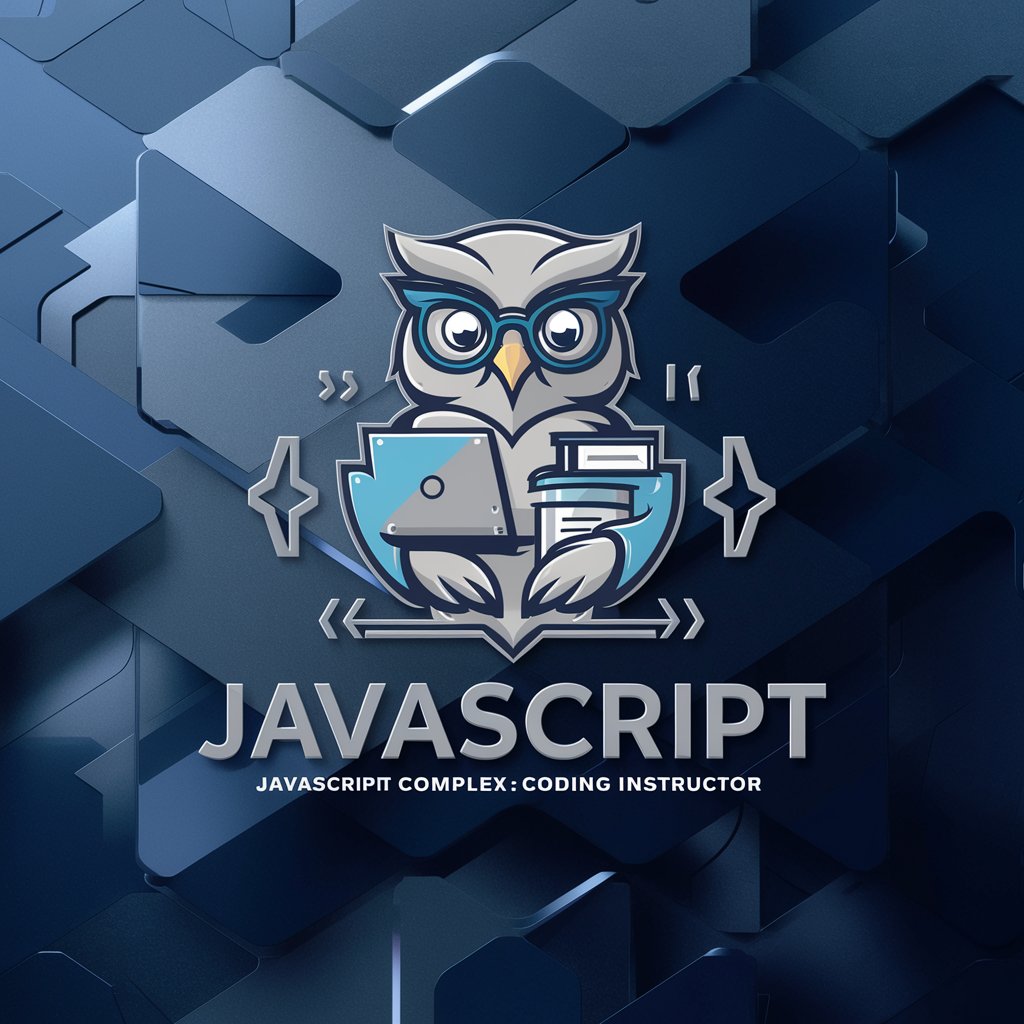Javascript Journey: Master Closures & Scopes - JavaScript Closures Mastery

Welcome to your JavaScript journey!
Demystifying JavaScript closures and scopes with AI.
Explain how closures work in JavaScript with a practical example.
What is lexical scope, and why is it important in JavaScript?
Can you demonstrate how to use closures to manage private data?
Provide an example of a common mistake when working with closures and how to avoid it.
Get Embed Code
Introduction to Javascript Journey: Master Closures & Scopes
Javascript Journey: Master Closures & Scopes is designed to demystify complex JavaScript concepts, focusing primarily on closures and scopes. This specialized program aims to provide a deep understanding of how closures work within JavaScript, the concept of lexical scoping, and how these are applied in practical programming scenarios. Through detailed explanations, code examples, and interactive coding sessions, the program ensures learners grasp the fundamentals and advanced applications of closures and scopes. For example, it explains how a closure allows a function to access variables from an enclosing scope even after the outer function has executed, using practical scenarios like event handlers, data encapsulation, and asynchronous programming. Powered by ChatGPT-4o。

Main Functions of Javascript Journey: Master Closures & Scopes
Understanding Closures and Lexical Scoping
Example
function outerFunction() { let outerVar = 'I am outside!'; function innerFunction() { console.log(outerVar); } return innerFunction; } let inner = outerFunction(); inner();
Scenario
This demonstrates a basic closure, where `innerFunction` accesses `outerVar`, a variable in its lexical scope, even after `outerFunction` has executed.
Data Encapsulation and Privacy
Example
function createCounter() { let count = 0; return { increment: function() { count += 1; return count; }, decrement: function() { count -= 1; return count; } }; } let counter = createCounter();
Scenario
Showcases how closures can be used to encapsulate and manage private data, allowing direct interaction only through defined methods.
Asynchronous Programming Patterns
Example
function asyncDataLoader(url) { return fetch(url) .then(response => response.json()) .then(data => console.log('Data loaded:', data)); } asyncDataLoader('https://api.example.com/data');
Scenario
Illustrates how closures facilitate asynchronous programming, allowing callbacks to access the scope in which they were created, thereby managing state across asynchronous operations.
Ideal Users of Javascript Journey: Master Closures & Scopes
Beginner to Intermediate JavaScript Developers
Individuals at the beginning or midpoint of their JavaScript learning journey who wish to solidify their understanding of core JavaScript concepts like closures and scopes, enabling them to write more efficient and maintainable code.
Software Engineering Students
Students pursuing software engineering or computer science who need to grasp the fundamental concepts of JavaScript for academic purposes or personal interest, aiming to apply these concepts in their projects or future careers.
Full-stack and Front-end Developers
Experienced developers looking to deepen their JavaScript knowledge, focusing on closures and scopes to improve their coding patterns, especially in the context of modern web development frameworks and libraries.

How to Utilize Javascript Journey: Master Closures & Scopes
Initiate Your Journey
Start by visiting yeschat.ai for a complimentary trial that doesn't require sign-up or ChatGPT Plus.
Explore Core Concepts
Familiarize yourself with JavaScript fundamentals, especially focusing on closures and scopes, to fully benefit from the specialized guidance.
Engage with Interactive Examples
Actively participate in coding sessions and exercises to understand closures' usage in maintaining state within a lexical context.
Apply Knowledge to Projects
Utilize the tool to assist in real-world projects or exercises, applying closures and scopes to manage private data and optimize memory usage.
Explore Advanced Topics
Progress to more complex use cases and patterns as your understanding deepens, ensuring a comprehensive grasp of closures and scopes.
Try other advanced and practical GPTs
Email Drafter
Craft emails effortlessly with AI

Go (Golang) Teacher
Master Go with AI-Powered Guidance

AI Story Generator Pro
Unleash Creativity with AI-Powered Storytelling

Sustainable Business & Finance: Key Measures
Empowering Sustainable Decisions with AI

Editor Pro
AI-Powered Precision Editing

Artistic Muse
Empowering creativity with AI-powered art

Interactive Nancy Drew Mystery Game
Solve mysteries with AI-powered detective skills.

JavaScript Animations Revealed: Elevate Web UIs
Animating UIs with AI-Powered Ease

TEFL Lesson Planner
AI-Powered ESL Teaching Companion

🖱️ Pixel Perfect AutoIt Expert
Automate with AI-driven pixel precision.

Python Power: Automate Like a Pro
Streamline tasks with AI-powered Python automation.

JavaScript: Scripting for System Excellence
Automate, Integrate, and Elevate with AI

Frequently Asked Questions on Javascript Journey: Master Closures & Scopes
What is a closure in JavaScript?
A closure in JavaScript is a function that remembers and accesses variables from the outside lexical scope, even after the outer function has closed.
How can closures be used for data privacy?
Closures allow for the creation of private variables within a function, providing a method to encapsulate and protect data from being directly accessed from outside the function.
Can you provide an example of a closure?
Sure, consider a function that creates a counter: `function createCounter() { let count = 0; return function() { return ++count; }; }` This function returns another function that, when called, increments and returns the count. The inner function has access to the `count` variable of the outer function, demonstrating a closure.
How do scopes work in JavaScript?
In JavaScript, scopes determine the visibility and lifetime of variables and functions. Variables defined inside a function are not accessible from outside the function, creating a local scope. JavaScript uses lexical scoping, where the scope of a variable is defined by its location within the source code.
What are the common pitfalls when working with closures?
Common pitfalls include unintentionally capturing the loop variable, leading to unexpected results, and memory leaks by holding onto references that are no longer needed. Understanding closures' behavior in different contexts is crucial to avoid these issues.
